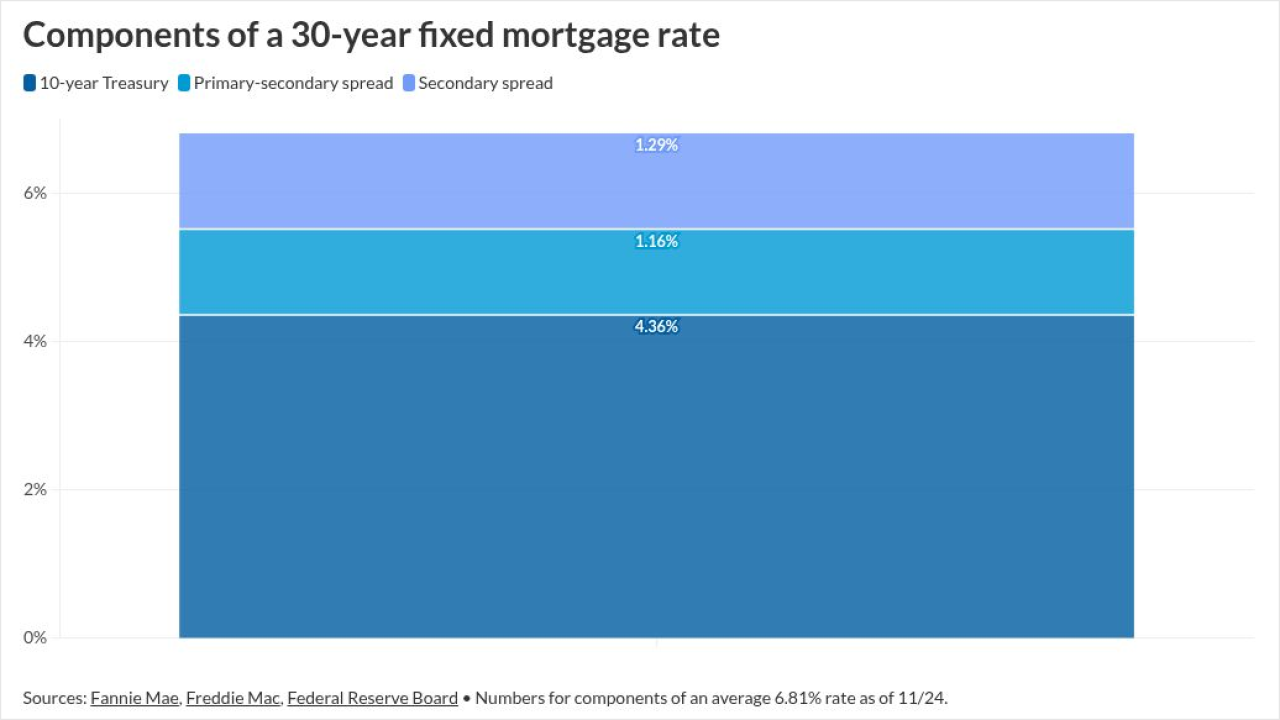Esther George, president of the Federal Reserve Bank of Kansas City, has commercial real estate on her radar for financial risks as the central bank tightens monetary policy.
Speaking with economist Peter Blair Henry during a webinar hosted by the Economic Club of New York on Wednesday, George said the combination of higher interest rates — raising the cost of CRE financing — and the pandemic-era shift toward remote work could hurt property owners and their lenders.
George noted that community banks have especially large exposure to CRE, which, at roughly $21 trillion, is the fourth-largest asset market in the U.S. behind equities, residential real estate and treasury securities, according to the Fed.
“We do see the structural changes that are taking place right now where maybe fewer people are going into offices and in some cases where businesses have decided they may not return to some of those offices,” she said. “We will have to watch and see how those play out and what kind of softening may take place in the office market relative to some other things.”
Real estate was among the asset types that have been supported during the pandemic era both by the Fed’s low interest rates as well as its asset-buying program that has swollen its balance sheet to $9 trillion, according to George, who also sits on the Federal Open Market Committee.
The central bank is poised to wind down both initiatives in an effort to curb inflation, having raised its benchmark interest rate for the first time since 2018 and pledging to begin shrinking its balance sheet soon. As those accommodations are removed, George said the underlying health of various asset classes will determine the severity of ripple effects of the Fed’s new policies.
“The hope is the economy will continue to be strong enough that those adjustments can take place in an orderly fashion,” she said. “It's only when something happens where things unwind in a disorderly fashion that you get some of the consequences that I worry about.”
Commercial real estate prices increased 7.5% between December 2019 and December 2020, nearly triple their long-term annual rate of 2.8%, according to the Fed’s most recent financial stability report issued last May. Yet, the report notes, depressed transaction volumes could be masking broader declines in overall property values, particularly for office buildings.
Commercial real estate loans were the one category for which banks continued to build loss allowances, as of last year’s report, as delinquency rates remained elevated. The Fed also identified higher vacancy rates and reduced rent growth as signs of potential weakness.
The Fed also included a 40% downturn in commercial real estate values concentrated among offices, urban hotels, malls and strip centers as one of the scenarios in
The scenario factors in an environment where many workers continue to work remotely, which leads to “larger commercial real estate price declines that, in turn, spill over to the corporate sector and affect investor sentiment.”
George said changing interest rates always have an impact on property prices, but the stakes for this current round of monetary tightening are even higher given the changing use patterns within offices.
“Real estate markets are quite sensitive to interest rates and how those move," she said. "Given that we've come through this period of very highly accommodative policy, [we are] watching how that translates into market values. In addition to this idea, now society is making changes, people are thinking differently about how they want to work, how those things will come together for that adjustment process."





